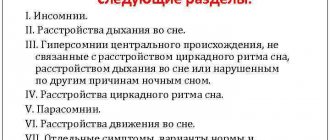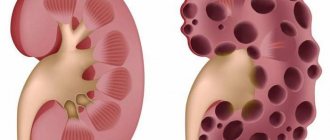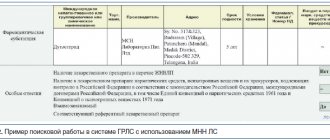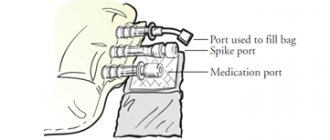The legal status of a prescription has a number of features, since it is not just a document, but also a kind of tool for monitoring the prescription of a drug and its use by the patient. The strict legislative requirement for the dispensing of a number of drugs exclusively on prescription forms minimizes abuse associated with the use of narcotic, psychotropic, potent substances, as well as other drugs that are subject to subject-quantitative accounting. Our article discusses in detail how to correctly fill out prescriptions for narcotic and psychotropic drugs, what are the features of writing prescriptions for different categories of patients, as well as what responsibility doctors bear for errors when filling them out.
General rules for issuing prescriptions for narcotic and psychotropic drugs
Let's start with the general rules for prescribing narcotic and psychotropic drugs for the treatment of patients. We have already touched on this issue in our article “Requirements of the law for the prescription of narcotic and psychotropic drugs in a hospital setting and in the provision of emergency medical care.” The same principles apply when prescribing them outside hospitals, including in the provision of primary and palliative care. Let's briefly repeat them:
- Only narcotic and psychotropic drugs from lists II and III can be prescribed for treatment (Clause 2, Article 25 of the Law “On Narcotic Drugs and Psychotropic Substances” dated 01/08/1998 No. 3-FZ - hereinafter Law No. 3-FZ).
- Such drugs can be prescribed only if there are medical indications.
- Before prescribing a drug from a series of narcotic or psychotropic drugs, it is necessary to find out from the patient whether he has previously taken such drugs and, if so, which ones (Clause 5, Article 25 of Law No. 3-FZ).
- You cannot use drugs containing drugs to treat drug addiction (Clause 6, Article 31 of Law No. 3-FZ).
- Only a registered drug can be prescribed (Clause 1, Article 31 of Law No. 3-FZ).
Violation of some of these principles when filling out prescriptions for narcotic and psychotropic substances entails criminal liability for the doctor, so they cannot be neglected. We will dwell on this issue in more detail below.
Legal regulation of issuing prescriptions for narcotic and psychotropic drugs
If the general principles for prescribing narcotic and psychotropic substances are established by Law No. 3-FZ, then the very procedure for issuing prescriptions is regulated in detail by departmental regulations of the Ministry of Health of the Russian Federation.
Here it is necessary to note two orders of the Ministry of Health, which medical workers need to focus on first:
- Order of the Ministry of Health of Russia dated January 14, 2019 No. 4n “On approval of the procedure for prescribing medicines, forms of prescription forms for medicines, the procedure for completing these forms, their recording and storage” (hereinafter referred to as Order No. 4n);
- Order of the Ministry of Health of Russia dated 01.08.2012 No. 54n “On approval of the form of prescription forms containing the prescription of narcotic drugs or psychotropic substances, the procedure for their production, distribution, registration, accounting and storage, as well as registration rules” (hereinafter referred to as Order No. 54n).
Order No. 4n establishes the general procedure for the appointment and prescription of all medicines, including narcotic and psychotropic ones. Order No. 54n deals only with the procedure for issuing prescriptions for narcotic and psychotropic drugs from List II, with the exception of transdermal therapeutic systems, as well as drugs containing a narcotic drug in combination with an opioid receptor antagonist. Therefore, in our analysis we will rely on both of these regulations.
It is impossible not to take into account regional regulations, for example, Order of the Moscow Department of Health dated December 11, 2015 No. 1077 “On the procedure for the acquisition, transportation, storage, accounting, dispensing, use, destruction, prescription and prescription of narcotic drugs and psychotropic substances included in the list II of the List, psychotropic substances included in list III of the List, in medical organizations of the state health care system of the city of Moscow.” They contain standards that clarify and detail federal ones, which can make the work of doctors easier to one degree or another. However, it must be remembered that regional acts are always somewhat delayed in their “reaction” to changes made to federal legislation.
In general, we can say that the regulatory framework in this area is complex, sometimes contradictory and subject to frequent changes, which, unfortunately, once again contributes to doctors making mistakes when writing prescriptions.
Who has the right to write prescriptions for narcotic and psychotropic substances?
Prescriptions for narcotic and psychotropic substances are written by doctors (paramedics, midwives when vested with such powers) of medical organizations when providing medical care on an outpatient basis, that is, outside hospitals.
Individual entrepreneurs providing medical care (so-called private doctors) cannot prescribe and write prescriptions for drugs containing drugs (clause 8 of the Procedure for Prescribing Medicines (Appendix No. 1 to Order No. 4n) - hereinafter Procedure 4n).
In most clinics, the head physician annually, by order, approves a list of health workers who have the right to write prescriptions for narcotic and psychotropic drugs. Let us note that doctors who write prescriptions but do not actually have direct contact with narcotic and psychotropic substances (for example, a local doctor in a clinic, an “office” oncologist, etc.) do not need to obtain a special permit to work with such substances. Unlike emergency doctors, who directly apply the drug to the patient who called them, the clinic doctor only decides on the need to use the drug and formalizes the prescription.
The decision to prescribe a narcotic or psychotropic substance is made solely by the doctor (paramedic, midwife) based on medical indications and the typical course of the disease, and he also writes out a prescription. In this case, in a number of cases, a decision of the medical commission is required (clause 33 of Order 4n), namely:
- If the patient is prescribed more than 5 medications per day or 10 medications within 1 month simultaneously with a narcotic and psychotropic substance.
- If the disease proceeds atypically, with complications.
- If co-prescribed drugs may lead to a decrease in the effectiveness and safety of therapy or pose a danger to the patient.
- If a narcotic or psychotropic substance is prescribed for the first time (if there is a decision by the head of the medical organization on the need to coordinate such prescriptions with the medical commission). Repeated prescriptions of narcotic drugs for such indications as severe pain syndrome of any origin, sleep disturbance, convulsive states, anxiety disorders, phobias, psychomotor agitation are always carried out solely by the doctor (clause 34 of Order 4n).
Action Lyrics
The exact mechanism of action of Lyrica on the human body is not fully understood. High doses of the drug cause a person to experience feelings similar to the euphoria after taking opioids (heroin or morphine).
Among drug addicts, the combination of a small amount of alcohol and Lyrica capsules is very popular. The effects of this analgesic and ethanol are mutually enhanced. Consumption of this kind of “cocktail” quickly leads to mental disorders and the development of somatic disorders.
Possible side effects of Lyrica:
- vestibular disorders (unsteadiness of gait or inability to maintain an upright position);
- weakening of reflexes (general inhibition);
- speech disorders (slurred pronunciation of words);
- defects (loss) of visual fields;
- change or complete loss of taste;
- dizziness;
- deterioration in the ability to concentrate;
- mental and motor excitement;
- cardiopalmus;
- tremor (trembling of limbs);
- sweating;
- insomnia.
In severe cases, clonic convulsions, stupor, and even coma may develop.
Sleep disturbances quite quickly lead to exhaustion of the nervous system, which in turn contributes to mental instability. Consumption of doses significantly higher than therapeutic doses causes mood swings; peace may give way to depression or anxiety. One of the symptoms of taking Lyrica is panic attacks. In a state of drug intoxication, the patient may show aggression towards others.
It is quite difficult to recognize a person who has been using Pregabalin for a short time. As long-term addiction develops, the signs become more noticeable. After each next dose, the pupils dilate, and the gaze becomes glazed and frantic.
What forms are prescriptions written on?
Prescriptions for narcotic and psychotropic substances must be filled strictly on the forms provided for this purpose.
| Narcotic and psychotropic drugs of List II of the List, with the exception of drugs in the form of transdermal therapeutic systems and drugs containing a narcotic drug in combination with an opioid receptor antagonist | Form form No. 107/u-NP. |
| Form form No. 148-1/у-88 |
*Some combination medications containing psychotropic substances in small quantities can be prescribed on form No. 107-1/u, that is, on a regular form (a full list of such cases is established in clause 4 of Order of the Ministry of Health No. 562n).
Standard Operating Procedure
Do not forget that in order to examine prescriptions and properly dispense them in a pharmacy, it is necessary to develop SOPs for these procedures. We provide an example of what may be indicated in the document in the illustration below.
And in conclusion, it must be said that the approval of the new dispensing procedure will inevitably lead to changes in other regulatory documents governing the rules for writing and processing prescriptions in the future. For example, the procedure for dispensing drugs (order No. 403n) - if only because it still contains a reference to the old order. Also, Order No. 403n does not contain a procedure for dispensing medicines using electronic prescriptions.
General requirements for the preparation of prescription forms and their details
The rules for issuing prescriptions in form 107/u-NP are contained in the Order of the Ministry of Health 54n (hereinafter referred to as Rules 54n). Prescriptions in form No. 148-1/u-88 are issued in accordance with Order of the Ministry of Health No. 4n.
A general requirement for a recipe of any form is its appearance: the form must be filled out legibly, clearly, with a ballpoint pen (ink) or can be printed on a printer. Corrections are not permissible (clause 3 of Rules 54n, clauses 3, 4, 15 of Appendix 3 to Order 4n).
It is mandatory to indicate the date the prescription was issued and to have a stamp from the medical organization with its name, contact information (address and telephone number) (clause 1 of Appendix 3 to Order 4n, clause 4 of Rules 54n).
In addition, in the recipes of both forms you need to enter in the appropriate columns:
- Patient's name and age. Here we cannot fail to mention the latest changes to Order No. 4n, according to which on prescription forms 148-1/u-88 and 148-1/u-88(l) it is now sufficient to indicate only the patient’s last name and initials; instead of the patient’s age, you now need to enter his date of birth (items 6, 7 of order 4n). No such changes were made to rules 54n (clause 5); accordingly, on form 107/u-NP it is necessary to indicate the patient’s full surname, first name and patronymic, and his age in full years, and not his date of birth.
- Full name of the doctor (paramedic, midwife) who wrote the prescription. A stamp can be used for this.
The prescription forms of form No. 148-1/u-88 also indicate the address of the patient’s place of residence (place of stay or place of actual residence) or the number of his medical card.
The prescription forms of form No. 107/u-NP indicate the series and number of the compulsory medical insurance policy and the patient’s medical card number.
Expertise
The algorithm for working with recipes in accordance with the new order can be depicted in the form of a simple diagram:
It is also important to check the expiration dates of prescriptions - they have not changed compared to Order No. 1175n. It is also necessary to carefully look at the required details for all forms. Remember that the doctor's name can be filled in not only by hand, but also with a stamp.
According to Larisa Garbuzova, most likely, in the first time after the new order comes into force, there will be a lot of errors in filling out the “age” field and in indicating the full name, without initials. Especially if the prescription is written on an old form. Is this a violation prohibiting the dispensing of the drug? Unfortunately, there is no clear answer to this question. There is also no practice of holding people accountable for this, since the order came into force only recently.
Contents of the recipe - purpose
Let's turn to the content of the recipe, namely how to formalize the prescription itself.
First of all, we note the most important principle “1 drug – 1 form”, which means that several drugs cannot be prescribed on one prescription form, regardless of whether they are all narcotic or psychotropic or not (clause 10 of Rules 54 n, clause 14 appendix 3 to Order 4n).
The name of the prescribed drug is written in the line “Rp:” in Latin (clause 17 of Procedure 4n, clause 9 of Rules 54n). The international nonproprietary name (INN) or chemical name is used, and only if it is absent, the trade name is used. Please note that if a drug does not have an INN or a group (chemical) name in the State Register of Medicines, it should be prescribed, indicating the full chemical composition (clause 6 of Order 4n), for example: codeine + caffeine + metamizole sodium + naproxen + phenobarbital (Pentanov -N).
It is further indicated (clause 10 of Rules 54n, clause 11 of Appendix 3 to Order 4n):
- Amount of active substance (in words). Indicated in accordance with the instructions for medical use of the drug. The main information source for doctors is the State Register of Medicines. For example, for the drug Phenibut, the instructions for medical use indicate the amount of the active ingredient - aminophenylbutyric acid 250 mg. Therefore, the recipe should be like this: Tabl. Ac. Aminophenilbutirici 250mg No. 20. If the drug is manufactured individually, then the amount of solid and bulk pharmaceutical substances should be indicated in grams (0.001; 0.5; 1.0), liquid - in milliliters, grams and drops.
It should be noted that when filling out a prescription, the doctor is obliged to adhere to the established maximum amount of narcotic and psychotropic substances in one prescription (Appendix 1 to Order No. 4n), and not exceed it (clause 14 of Order 4n).
At the same time, the doctor has the right to exceed this amount, but no more than 2 times for those patients who need long-term treatment, primary health care and palliative care (clause 16 of order 4n). When increasing the recommended maximum, the physician should consider clinical guidelines. For example, in the clinical guidelines “Chronic pain syndrome in adult patients requiring palliative care for the treatment of severe pain,” there is no maximum daily dose for the drugs morphine and fentanyl. Therefore, the doctor can refer to clinical recommendations and exceed the dose - prescribe a larger number of tablets, capsules, transdermal systems than indicated in Appendix 1 to Order No. 4n). It is better to support the decision with the conclusion of a medical commission on the rational prescription of medications.
Such an appointment must be marked with an additional inscription on the prescription “For special purposes” and certified by the signature of the health worker and the seal “For prescriptions”, and if the prescription is electronic, then a similar mark is certified by the enhanced qualified electronic signature of the health worker.
- Drug dosage. If a single dosage is exceeded, it is necessary to indicate the prescription with an exclamation mark (clause 15 of Order 4n).
- Method of administration. It is written in Russian or the language of the republic of the Russian Federation, it is formulated specifically and clearly, you cannot use general phrases, for example, “Internal” or “Known.” The method of administration must indicate the frequency, time of administration relative to sleep (morning, at night) and its duration, and for medications that interact with food, the time of their use relative to meals (before meals, during meals, after meals).
When filling out prescriptions, you can use abbreviations. The list of adopted reductions is contained in Appendix 2 to Order 4n. To avoid confusion and errors, ingredients that make up the medicinal product with similar names should not be abbreviated.
Additional marks are also used when filling out recipes. For example, if a medicine needs to be dispensed urgently, the designations “cito” (urgent) or “statim” (immediate) are placed at the top of the prescription on paper. Similar designations are affixed in the form of marks when filling out a prescription in the form of an electronic document (clause 19 of Order 4n).
When filling out prescription forms for medications prescribed by decision of the medical commission, a special mark (stamp) is also placed on the back of the form (clause 16 of Procedure 4n).
The completed prescription is certified by the signature and personal seal of the doctor, as well as the seal of the medical organization “For prescriptions”, which is affixed by a person authorized by the head of the medical organization, indicating the last name, first name, patronymic (the latter - if available) and affixing his personal signature (clause 10.1 of the Rules 54n, clause 13 of Order 4n).
On the completed prescription, after the drug is dispensed to the patient, a pharmacy mark is placed indicating the name, quantity of the narcotic (psychotropic) drug dispensed and the date of its dispensing, which is certified by the signature of the pharmacy employee, indicating his full name and the round seal of the pharmacy.
Since prescription forms are strict reporting forms, each prescription issued must be entered in the prescription journal. In addition, a note about the prescription is also made in the patient's medical records.
Validity periods for prescriptions for narcotic and psychotropic substances
Prescriptions written out on forms No. 148–1/у-88 are valid for 15 days from the date of issue (clause 21 of Order 4n).
The validity period of prescriptions written on special prescription forms in form No. 107/u-NP is also 15 days (Appendix No. 1 to Order No. 54n). In accordance with paragraph 6 of Art. 25 of Law No. 3-FZ, pharmacies and medical organizations are prohibited from dispensing narcotic and psychotropic drugs included in List II according to prescriptions written out more than 15 days ago.
According to paragraph 25 of order 4n, if we are talking about prescriptions for:
- barbituric acid derivatives;
- combination medicinal products containing codeine (its salts), other combined medicinal products subject to subject-quantitative accounting;
- drugs with anabolic activity (in accordance with the main pharmacological action) for the treatment of patients with chronic diseases;
then they can be discharged for a course of treatment of up to 60 days.
In the case when the course of treatment lasts more than 30 days, in addition, in paper prescriptions, the inscription “For special purposes” is made, certified by the signature of a medical worker and the seal of the medical organization “For prescriptions”. On prescriptions in the form of an electronic document, it is made with the affixing of an enhanced qualified electronic signature of a medical worker and a person authorized to certify documents on behalf of the medical organization.
Preferential prescriptions may have a longer validity period, which we will discuss below.
How is it compiled?
The document is generated in the medical records recording system. The ability to create an electronic prescription appears only after confirmation of the patient’s consent. In this case, a written form is not required - just check the box and click the “OK” button.
Next, the doctor needs:
• create a new prescription for a medicinal product; • fill out the fields in accordance with legal requirements (some data is automatically downloaded from the medical record); • create a recipe, indicating that it will be electronic; • certify it using UKEP (if necessary, you can add the signature of the chairman of the medical commission); • save the entered data.
After saving, the information is automatically sent to the database, and a QR code is generated for presentation to the patient. The person will find it in his personal account after authorization through the ESIA. When printing, a prescription form is generated in the prescribed form with the “Duplicate” watermark.
Features of issuing preferential prescriptions
A number of patients have the right to receive medications free of charge or to purchase them at a discount. The list of all categories of such citizens is contained in paragraph 36 of Order 4 n (for example, patients with hemophilia, cystic fibrosis, pituitary dwarfism, Gaucher disease, malignant neoplasms of lymphoid, hematopoietic and related tissues, multiple sclerosis, etc.).
For such cases, Order 4n approved a special form of prescription form No. 148-1/u-04(l). It is filled out according to the general rules for preparing recipes in accordance with the procedure 4n. Among the features are:
- indication of the code of the medical organization in accordance with its OGRN (paragraph 2, paragraph 1, appendix 3 to order 4n);
- code of the subject of the Russian Federation (paragraph 3, clause 2, appendix 3 to order 4n);
- code of the category of citizens entitled to receive medications in accordance with Article 6.1 of the Federal Law of July 17, 1999 No. 178-FZ “On State Social Assistance”, and the code of the nosological form according to the International Statistical Classification of Diseases;
- note about the source of funding;
- barcode.
Narcotic and psychotropic drugs can be obtained or purchased on preferential terms. In this case, the doctor needs to issue 2 prescriptions at once: on the regular form that is required to prescribe this medicine, and on form No. 148-1/u-04(l) in two copies (clauses 39, 40 of order 4n).
Preferential prescriptions on form 148-1/u-04(l) for narcotic and psychotropic drugs are valid for 15 days from the date of registration (clause 22 of Order 4n). The exception is prescriptions issued to pensioners, disabled people of group 1, disabled children, as well as citizens with chronic diseases requiring long-term treatment. They are valid for 90 days from the date of registration (clause 23 of Procedure 4n).
Possible disadvantages
Until the system is finally implemented and adapted, inconvenience cannot be ruled out.
So far the following shortcomings are observed:
- A small list of pharmacies connected to the system. If a patient wants to go to another organization that does not have the ability to read QR codes, he has to go to the doctor again for a duplicate.
- Territorial limitation. The electronic prescription is valid only within the region where it was issued. This is inconvenient for people traveling around the country.
- Uneven digitalization. The new feature has been widely announced, but is being implemented and developed differently in all regions.
The transition to virtual analogues worries the older generation. If in the future it is decided to abandon paper forms, this will complicate the process of obtaining medications for older people. Not everyone works with smartphones and the State Services portal.
Features of issuing electronic prescriptions
Clause 1 Art. 26 of Law No. 3-FZ, clause 3 of Order 4n allow the issuance of prescriptions for narcotic and psychotropic drugs not only in traditional paper form, but also in the form of an electronic document.
At the same time, Order No. 4n in relation to those medicines for which prescriptions are written in forms 148-1/u-88 and 148-1/u-04(l), contains fairly detailed instructions for issuing electronic prescriptions (Appendix 3 to Order No. 4n).
But Order No. 54n does not yet contain specific instructions regarding the issuance of prescriptions for narcotic and psychotropic substances in electronic form. The issue of practical implementation of electronic prescriptions falls within the competence of regional authorities, who must make an appropriate decision on the use of electronic prescriptions along with paper ones in a constituent entity of the Russian Federation (Clause 4, Article 6 of the Law “On the Circulation of Medicines” dated April 12, 2010 No. 61-FZ). Currently, electronic prescriptions are used as an experiment in a number of regions: in Moscow, St. Petersburg, Belgorod, Kaluga, and Sakhalin regions. In other regions, the authorities are not yet ready to dive deeply, including investing financially, into the digitalization of the process of issuing prescriptions.
In addition to the decision of the subject of the Russian Federation, for issuing electronic prescriptions it is required (clauses 6, 7, 9, 10 of the Regulations on the unified state information system in the field of healthcare, approved by Decree of the Government of the Russian Federation of May 5, 2018 No. 555):
- registration of a medical organization in the federal register of medical organizations of the unified state information system in the field of healthcare;
- connecting a medical organization to the state information system in the field of healthcare of a constituent entity of the Russian Federation;
- registration of a health worker writing a prescription in the federal register of medical workers.
The most important condition for issuing an electronic prescription is the consent of the patient or his legal representative. The electronic prescription is signed with an enhanced qualified electronic signature of the doctor.
In the recipe itself, in addition to the usual information indicated in the recipe, the following fields are additionally filled in (clause 20 of Order 4n):
- Code of the subject of the Russian Federation according to OKATO;
- OGRN of a medical organization;
- Unique prescription number;
- In addition to the patient’s full name and date of birth, also the patient’s address and electronic medical record number.
The electronic prescription is signed with an enhanced qualified electronic signature of the doctor. At the patient’s request, a paper duplicate of the prescription can be issued at the same time (clause 22 of Appendix 3 to Order No. 4n).
Electronic prescriptions have many advantages for both the patient and the doctor:
- Registration of an electronic prescription takes several times less time than a paper one;
- The system for issuing electronic prescriptions allows you to avoid mistakes that doctors so often make when writing prescriptions on paper;
- The electronic prescription cannot be lost or damaged;
- When issuing an electronic prescription, the doctor can immediately see which pharmacy has the drug being prescribed.
We can only hope that in the near future electronic prescriptions will be issued everywhere, due to which the number of errors in prescriptions will decrease and the availability of narcotic and psychotropic drugs for patients will increase.
How are drugs dispensed at the pharmacy?
The patient must present the QR code to the pharmacist. He can print it out in advance from his personal account on Gosuslugi or open it through a smartphone application. By scanning it, the pharmacy worker finds the corresponding appointment in the system. If a person has not yet received the medicine, the pharmacist dispenses it in an acceptable quantity and notes the fact of sale in the system. In this case, the employee has the right to make sure that he is dispensing the medication to the person to whom it was prescribed. It can also be received by a legal representative - a parent, guardian, trustee.
The doctor, for his part, will be able to make sure that the patient received the necessary drug. If, after scanning the QR code, it turns out that there was no such prescription (or the medicines for it have already been dispensed), the sale will be refused.
Features of issuing prescriptions when providing palliative care
A prescription for a narcotic or psychotropic drug, if indicated, can be written out by a doctor directly at the patient’s home when providing palliative care. This most important and long-awaited change was made to clause 10.1 of Order 4n by order of the Ministry of Health of Russia dated December 11, 2019 No. 1021n.
In such cases, it is allowed to certify the prescription form in advance:
- stamp of the medical organization;
- seal of the medical organization or its structural unit “For prescriptions”. A person authorized by the head of the medical organization has the right to stamp and sign the prescription. In the journal of registration and accounting of prescription forms, a corresponding note is made about the issuance of a prescription at home, certified by the signature of a doctor (paramedic, midwife), which can be additionally confirmed by photo and video materials. Signatures of the heads of medical organizations and structural divisions and their deputies are not required on such prescriptions.
As mentioned above, when providing palliative care, the number of medications prescribed to the patient included in the PCU list can be increased taking into account clinical recommendations, but not more than 2 times compared to the amount of narcotic drugs or psychotropic substances that can be written out in one prescription, established in Appendix 1 to Order 4n (clause 16 of Order No. 4n).
Of course, this innovation is very progressive and is generally aimed at increasing the availability of narcotic and psychotropic substances for patients who need them.
Subjects of the Russian Federation are taking their own additional measures to increase the availability of narcotic and psychotropic substances for palliative patients. Thus, in accordance with Order of the Moscow Department of Health dated 02/05/2018 No. 72, doctors of the visiting palliative care service have the right to prescribe such drugs, write prescriptions for them, change the name or dosage.
In addition, this document establishes that the provision of narcotic drugs and psychotropic substances to discharged patients who received palliative medical care in an inpatient setting, and to patients under the supervision of an on-site palliative medical care service, according to written prescriptions, is carried out in the attached pharmacy organizations. Managers and health workers of medical organizations providing inpatient or outpatient palliative care must closely interact with the attached pharmacies: check the availability of medications, send lists of doctors authorized to write prescriptions, information about the patients being discharged and the drugs prescribed to them, etc.
How is it convenient?
The main goal of digitalization is to improve the convenience of using services. In the case of the introduction of electronic prescriptions, it is observed in different directions.
For the patient:
- eliminating the risk of loss or damage to the form;
- the ability to remotely find out which pharmacies you can contact;
- recording information about expenses to facilitate obtaining a tax deduction;
- control of medication prescriptions for relatives (children, elderly).
For a medical organization:
- minimizing paperwork;
- saving time on interaction with the patient;
- tracking patient medications and treatment progress;
- the ability to see prescriptions made by other doctors in order to avoid the selection of incompatible drugs;
- accounting for the supply of drugs to pharmacies for the timely selection of analogues.
For the pharmacy:
- no need to understand the doctor’s handwriting;
- facilitating prescription examination;
- there is no risk of being held liable for selling medicines using fake documents.







